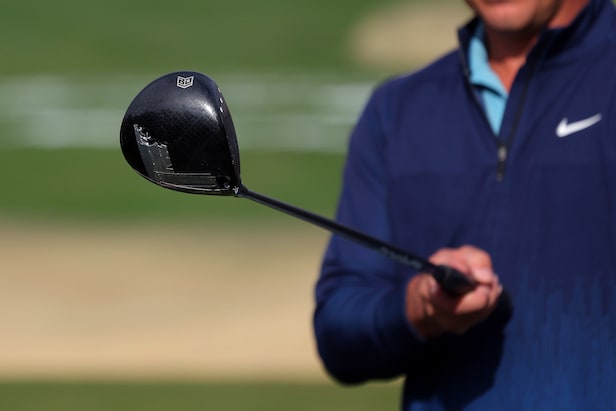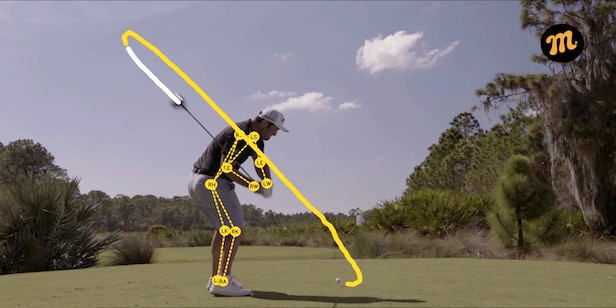Why nobody will mow the fairways at this week’s PGA Tour event – Australian Golf Digest

- by Admin
- October 10, 2024

This week’s Black Desert Championship in Utah won’t feature a small army of pre-dawn turf tenders cutting fairways, or lawn jockeys perfecting cross stripes, skip rows, circle cuts, 50-50 or push-and-pull patterns. In fact, nobody will be doing any fairway mowing—it will be the first time fully automated electric machines will mow a PGA Tour course.
The machines—developed by FireFly in Salt Lake City, a company with roots in the agriculture, turf and sod sector—will be deployed daily at 2 a.m. to mow the 7,371-yard, 71-par course nestled in a lava field in the southern Utah town of Ivins. After setting the perimeter by GPS and selecting a cut pattern, four mowers will make the cut over four hours and 30 minutes, leaving grounds crew to focus on roughs, greens, and tee boxes, or any of the other endless details involved in maintaining a golf course.
It’s more of an augmentation than a replacement of staff, according to FireFly co-founder Steve Aposhian. “This allows groundskeepers to utilize their time better,” he says. “They’re getting to tasks they otherwise wouldn’t be able to get to. And then ultimately the playability of the course improves.”
Ken Yates, the superintendent for the Black Desert Resort golf course, was initially apprehensive. “I’m used to having a man sitting on a mower,” he said. “But they’ve proven themselves that they can do it. And I’m comfortable with them. They’re doing a great job. Once they mapped the course it was really easy. It flowed really well.”
RELATED: Why some American courses are using this ‘sustainable’ feature
Yates has his hands full. The course—which is still settling, causing irrigation boxes to annoyingly rise above fairways—is only two years old and now hosting an inaugural PGA Tour tournament. He says the PGA Tour is waiting to see how the new mowing system lays out. “They’re just cautiously watching,” he said. “But of course with anything new, you’re going to be like that. It’s a new course, a new technology, a new tournament, and we all fit together. We’re all taking the leap together.”
Aposhian was initially nervous working with the PGA Tour, not knowing what to expect or their reaction to the new technology. “I’ve been working with one of their agronomists, and it’s been incredible,” he said. “They want to be exacting. The PGA Tour strives for high quality and perfection. And I love that. I never tire of a client wanting excellence.”
Brian Oar false Public Black Desert Resort Ivins, UT, United States Black Desert Resort in the arid desert of southern Utah, surrounded by horizons of red rock mountains, was the last golf course Tom Weiskopf was involved in building (he was diagnosed with cancer as construction was beginning). Opened in 2023, the public course is a stunning juxtaposition of wavy fairways chiseled out of fields of black lava rock that had to be blasted into golf formations. Phil Smith, Weiskopf’s longtime design partner, completed the visually arresting design that will host the PGA Tour’s new Black Desert Championship in the fall of 2024, and another LPGA event the following year. Black Desert Resort is located outside the golf-rich area of St. George, Utah. The PGA Tour will host a new event at Black Desert in 2024, marking the first PGA Tour event in Utah in more than 60 years. Explore our full review
The PGA Tour, which partners with John Deere, has no immediate plans to go automated. “The tools a course uses is up to them,” said PGA Tour spokesman Joel Schuchmann. “We welcome the opportunity to learn from their use of battery-powered autonomous mowers as the industry continues to innovate,” he added.
FireFly CEO Andrew Limpert and Aposhian initially started the company in 2010 with agricultural applications, but soon discovered other uses such as athletic fields, public parks, and golf courses. “Affordable and willing labor was tough to find,” Limpert said. They converted a 22-foot wide automated mower into a smaller, more tactile mower. “The principle was still the same, but the big ones were just unwieldy,” he said.
Each machine is 100-inches wide and has four independent motors with a rechargeable battery pack that can cut grass for five hours on each charge. The front tires are slick, and the rears have a little traction. “Superintendents don’t want any tear or friction on the grass,” says Limpert.
Sustainability is a huge factor. Electric is better, Limpert said, and autonomous mowers save on labor costs and fuel. There’s also no emissions, oil spillage, or noise pollution. “We didn’t do it to save the world, but people like all that.”

Brian Oar
It’s all high-volume fairway mowing, Limpert said. “We don’t want to get close to the greens. People are very sensitive about their greens. Every golf superintendent thinks their greens are special—and they should. They think it has feelings, emotions, and dreams. We’re not ready for that.” At some point, FireFly might start mowing rough.
FireFly has done more than 150 demonstrations at golf courses across the country, and said some courses are working the mowers into their budgets. About 20 clubs have or plan to convert to the automated mowers. FireFly has sold units to The Santaluz Club in San Diego, Walnut Creek Country Club in Michigan, and Glenwild Golf Club in Park City, Utah. But there’s been some hesitation due to the disruptive technology, Limpert says.
There has been a general reaction from groundskeepers. “Generally, the reaction is amazement,” Aposhian says.
“They’re shocked, scared and subsequently excited,” Limpert says. “But I’d be a liar if I said I wasn’t nervous.” He still can’t believe he’ll be sharing the stage with the PGA Tour. “It’s stunning,” he says. “We’re punching way above our weight. We’re country boys. But we’re ambitious.”
This article was originally published on golfdigest.com
The Latest News
-
December 21, 2024‘Dream come true’: Emotional Test bolter on shock call-up and classy act from man he replaced
-
December 21, 2024‘Got this wrong’: Former skipper criticises selectors’ call
-
December 21, 2024The Kings horse Gilded Water wins at Randwick races
-
December 21, 2024Nick Kyrgios has chance to become first player ‘to do it all’, says tennis great in big statement about Aussie
-
December 21, 2024Australia retains Rose Bowl after rain-affected victory





